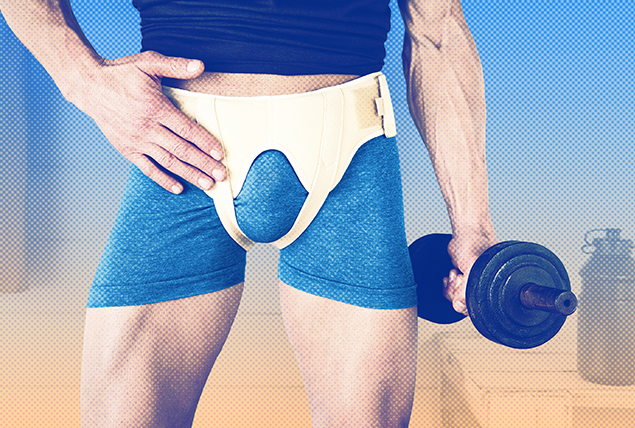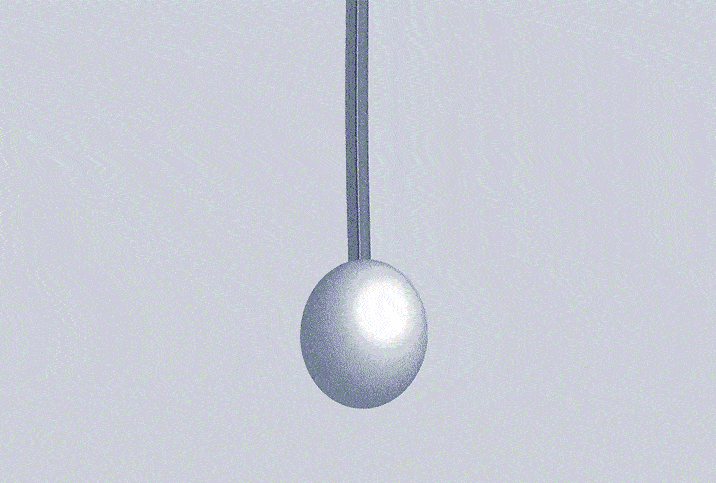We Have Questions: Inguinal Hernias in Men

Key Points
- A hernia occurs when an organ or fatty tissue pops through a weak spot in the surrounding muscle or connective tissue.
- An inguinal hernia, or groin hernia, is the most common type of hernia in men.
- An inguinal hernia is best fixed through surgery, but there are other potentially effective methods.
A hernia occurs when an organ or fatty tissue protrudes through a weak spot in the surrounding muscle or connective tissue. The most common type of hernia is an inguinal hernia, or a groin hernia.
With an inguinal hernia, tissue from inside the abdominal wall protrudes through a gap or weakening in the abdominal muscles. A hernia can appear as a lump in the groin region or an enlarged scrotum in men.
Inguinal hernias occur in about 1 in 4 men, said Michael Reinhorn, M.D., a general surgeon specializing in hernia surgery at Boston Hernia. In the following Q&A, Reinhorn addresses common questions about inguinal hernias in men, including causes, symptoms and treatment options.
Editor's note: This interview has been edited for length and clarity.
Why do inguinal hernias occur in men?
Reinhorn: All men have a small opening in their abdominal wall to let blood vessels flow to the testicles and the sperm flow back out. As men get older, their tissues get stretchier and that hole gets a little bit bigger. Gravity works against men, so tissue sometimes pops out through that hole.
An inguinal hernia occurs when tissue inside the abdominal wall bulges out toward the testicle. That tissue can be the intestine, fat or the urinary bladder.
What causes an inguinal hernia?
There's a congenital component: kids can be born with extra tissue in their inguinal canal.
For adults, it's most often a wear-and-tear situation. Over time, the abdominal wall slowly stretches out and can't hold the abdominal contents back as effectively as it once did.
What are the symptoms of inguinal hernias in men?
A hernia causes a visible bulge. It can be smaller than a golf ball or as big as a baseball.
In some cases, patients experience pain and discomfort while sitting or standing. Some patients have intestinal complaints, such as bloating, gassing or a gurgling feeling. Some will even have trouble with urinating or have to urinate more frequently because their bladder is coming in and out of the hernia.
The most common symptom that we see is in active patients, who complain of swelling and discomfort in their groin after exercise. This sometimes limits or prevents them from exercising.
Recommended
- Hydroceles: Myths and Misconceptions: We're shedding light on some misunderstandings about the testicular condition called hydroceles.
- How in the Heck Are Constipation and Testicle Pain Connected?: Bloated and backed up with an ache in your balls? It could be a case of referral pain.
- What to Expect During a Penis Exam: Getting regular penis exams from your doctor is an important part of preventative healthcare.
How can an inguinal hernia impact a man's sex life?
I have had a fair number of men tell me they have pain during intercourse. When tissue bulges out, it can cause pain during sex—just like any other physical exercise.
What are the potential complications if a hernia is left untreated?
Most often, a man's quality of life can be adversely affected if a hernia is left untreated. People might not be exercising or active because their hernia is restricting their activity. We see people who get out of shape because of their hernia.
Another potential complication is that the intestine, bladder or piece of fat can get stuck in the hernia. That can lead to an emergency situation in which a patient not only needs surgery to fix their hernia but additional surgery to fix their bladder or intestine.
The surgery can become complicated and even life-threatening. This complication occurs in a very small subset of patients, but it can be pretty dangerous.
That's why, for anyone who has a hernia with symptoms, we usually recommend surgery. That way, they can avoid some of the complications and have a better quality of life after surgery.
What are the non-surgical options for an inguinal hernia?
A hernia belt or hernia truss can mimic surgery. When worn properly, a hernia belt pushes the tissue back into the abdominal cavity and keeps it in place.
A lot of people see significant improvement in their symptoms. Some patients wear the belt for several years before it stops working as well, and they choose to have the hernia surgically fixed.
What is involved in an inguinal hernia surgery?
There are three ways to fix an inguinal hernia through surgery.
The easiest way is to stitch the hole or weakness in the abdominal wall closed. This method works very well for thinner people and in cases where implanting mesh in the body could cause problems.
A no-mesh repair is the oldest type of hernia repair. In skilled hands, it has good outcomes.
The second way a hernia can be fixed involves putting a piece of mesh on the outside of the abdominal wall instead of just stitching it closed. This is a somewhat antiquated way of fixing a hernia because the mesh can come in contact with nerves.
For people who are more sedentary or overweight, their abdominal wall stretches out and a hernia is more likely to occur.
Another downside to this method is that the abdominal pressure pushes against the mesh, leading to a higher failure rate over time.
Many hernia surgeons, including myself, prefer the third way: putting the mesh on the inside of the hole where the abdominal pressure can hold it in place. This method can be done either under general anesthesia using laparoscopic or robotic equipment, or it can be done using local anesthesia with sedation.
This is the preferred surgical option for hernia repair because it leads to the fastest return to activity and the lowest amount of pain after surgery.
What can patients expect during and after their surgery?
Each individual patient should ask their surgeon because they're going to offer different approaches to the surgery that will affect the recovery.
The day of surgery in our practice is almost always a three- to four-hour event, where a patient comes in for the surgery, meets the team and has an IV placed. The surgery takes roughly an hour. Generally, in about an hour to an hour and a half after surgery, they go home.
In our practice, more than 90 percent of patients are not prescribed anything other than Tylenol and Motrin. We ask people to ambulate and go for walks early on, either on the day of surgery or the day after.
We recommend patients restrict activity for a couple of weeks after surgery, just because there's a small risk of bleeding after surgery if they overdo it.
Different surgeons will have different recommendations after surgery depending on the procedure, but generally, most people are back to their preoperative activity level and feeling significantly better within a month or two.
Can men do anything to reduce their risk of developing an inguinal hernia?
My advice is a little different than what's written in most textbooks and on the Internet. As a hernia surgeon who has seen over 10,000 patients and a former engineer, I suspect that staying healthy, eating well, exercising and strength training can be preventative for a hernia.
For people who are more sedentary or overweight, their abdominal wall stretches out and a hernia is more likely to occur. If a person is keeping their muscles and fascia strong and healthy, they're distributing pressure along a wider surface area.


















